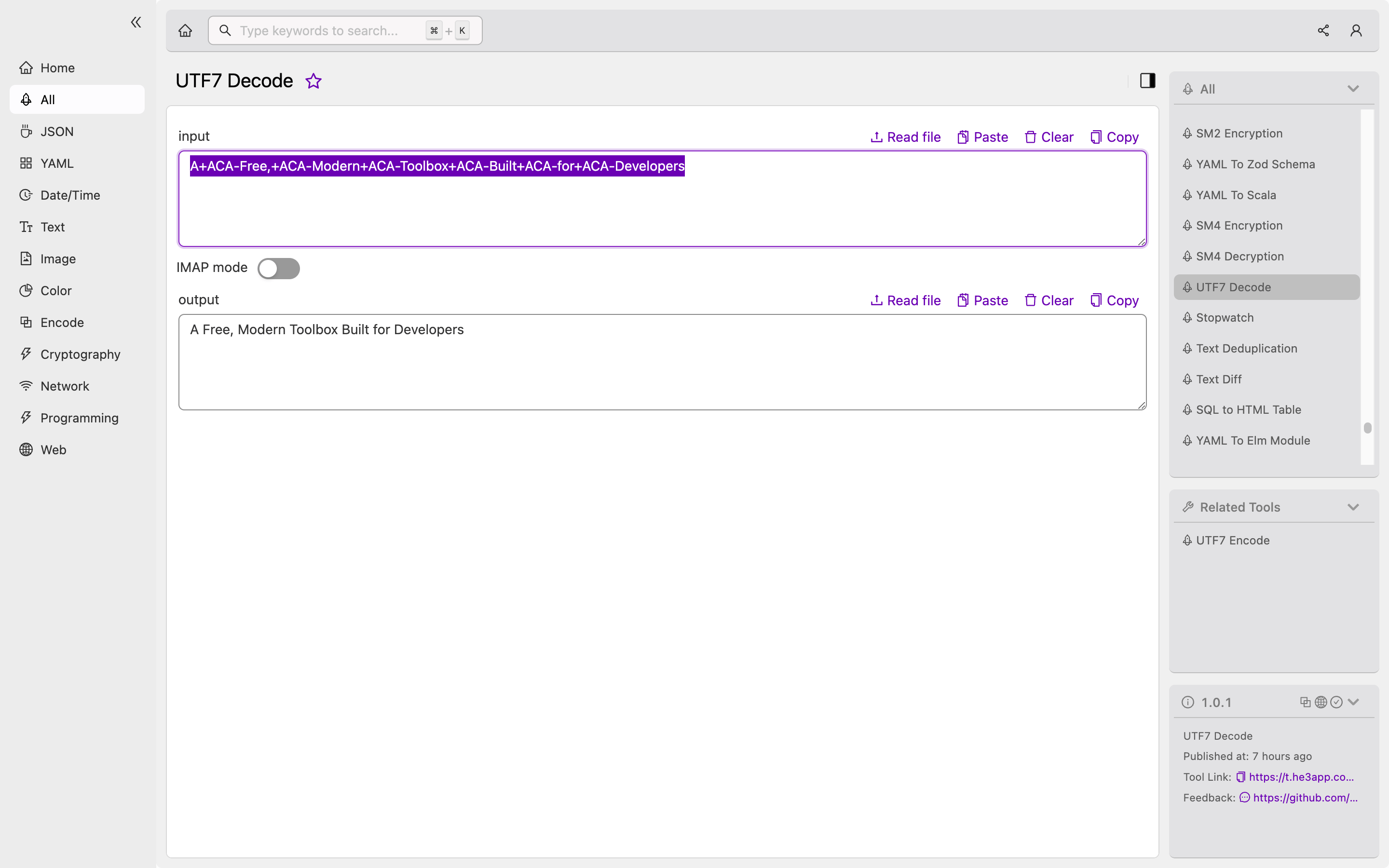Understanding UTF7 Decode: A Guide for Developers
In the realm of software and programming, character encoding is an essential part of data processing. It is the system that converts characters into digital data, allowing information to be transferred from one system to another. One of the most widely used character encoding systems today is UTF-8. However, there are times when we encounter other character encoding systems, such as UTF-7. In this guide, we will discuss UTF7 Decode, its concept, how it works, features, and much more.
What is UTF7 Decode?
UTF7 Decode is a process that converts characters in UTF-7 encoding to their corresponding characters in Unicode. UTF-7 (Unicode Transformation Format, 7 bits) is a character encoding scheme that was created to transmit Unicode characters through systems that only handle 7-bit ASCII data. The UTF-7 encoding scheme uses base64 to encode non-ASCII characters into ASCII characters, which can be sent through systems that only support 7-bit characters.
How Does UTF7 Decode Work?
UTF7 Decode works by reverse-engineering the base64 encoding process of the UTF-7 scheme. The UTF-7 encoded data is first analyzed, and the base64 encoded characters are converted back into their original values. The resulting data is then converted from UTF-7 to Unicode, which returns the original characters.
Sample Code or Commands
To decode UTF-7 encoded data using Python, the “utf_7_decode()” function can be used:
import codecs
utf7_encoded_data = "JyAjIGxvb3AgcGFzdGUgI2QmaGVsbG8="
decoded_data = codecs.decode(utf7_encoded_data, 'utf-7')
print(decoded_data)Scenarios for Developers
Developers may encounter UTF7 encoding when working with legacy systems or legacy data. In such cases, they may need to convert UTF7-encoded data to Unicode, which can be done through the UTF7 Decode process. Developers can use the UTF7 Decode tool in He3 Toolbox (https://t.he3app.com?0o9u) or implement the process in their code.
Key Features
| Feature | Description |
|---|---|
| Compatibility | UTF7 Decode is compatible with systems that use UTF-7 encoding |
| Decoding | Converts UTF-7 encoded data to Unicode |
| Base64 decoding | Reverse-engineers the base64 encoding process |
| Easy to use | Can be implemented in code or used through tools such as He3 Toolbox |
Misconceptions and FAQs
Misconception: UTF-7 is obsolete and no longer used today.
UTF-7 is still used in some legacy systems, and developers may encounter it when working with older data. While UTF-8 is the most widely used character encoding system today, UTF-7 is still relevant in some scenarios.
FAQ: Is there a difference between UTF-7 and UTF-8?
Yes, there is a significant difference between UTF-7 and UTF-8. UTF-7 is a variable-length encoding that uses 7 bits to represent ASCII characters and a combination of 7 and 8 bits to represent non-ASCII characters. On the other hand, UTF-8 uses a variable-length encoding that uses 8 bits to represent ASCII characters and between 8 and 32 bits to represent non-ASCII characters.
FAQ: When should I use UTF7 encoding?
UTF7 encoding should be used when dealing with legacy systems or data that solely supports 7-bit ASCII characters. In modern systems, UTF-8 is the recommended encoding system.

Conclusion
UTF7 Decode is a useful tool for developers, particularly those who work with legacy systems or data. It is a process that converts UTF-7 encoded data to Unicode, making it easier to work with in modern systems. While UTF-7 is not as widely used as UTF-8, it is still relevant in some scenarios. Developers can implement the UTF7 Decode process in their code or use tools such as He3 Toolbox to make the process easier. For more information on UTF-7 and character encoding systems, check out the Wikipedia page on the topic.
